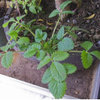Round Up
kimcoco
13 years ago
Related Stories

10 Ways to Round Up Some Texas Style
Get a Lone Star State feel minus the clichés with cool art, hipster vinyl and pieces with history to balance the look
Full Story
ORGANIZINGGuest Picks: Stylish Storage Box Round-up
Stash Things Away In Style with One of These 20 Storage Options
Full Story
Warm Up a Sunroom Year-Round
Turn your sunroom into a space you can enjoy through all four seasons
Full Story
FURNITUREGather 'Round: The Perfect Conversation Area
Set up four club chairs and a round coffee table in den, library or living room
Full Story
PRODUCT PICKSGuest Picks: Orange Fabrics for Year-Round Fanfare
Nothing punches up a room faster than pillows, drapes or upholstered furnishings in energizing orange — even after autumn
Full Story
SHOP HOUZZShop Houzz: Gather Round the Kids’ Table
Child-friendly plates, cups and more that are stylish enough for grown-ups too
Full Story0

DECORATING GUIDESPoppies Pop Up in Home Interiors
Sprinkle these bright blossoms throughout your house for springtime all year round
Full Story
Indoor Gardener: Topiaries Help Rooms Shape Up
Undeniably sculptural, topiaries in modern geometric to classic round shapes bring fresh artfulness to the home
Full Story
HOMES AROUND THE WORLDTraditional Kitchen Opens Up and Lightens Up
Removing a wall was key to creating a large kitchen and dining space for family life in this London house
Full Story
PRODUCT PICKSGuest Picks: Round Out Your Room
Give hard angles the old soft touch with circular furniture, accessories and lighting
Full Story






maifleur01
Kimmsr
Related Professionals
Cottonwood Landscape Architects & Landscape Designers · Eden Prairie Landscape Architects & Landscape Designers · Wilmington Landscape Contractors · Eureka Landscape Contractors · Fort Wayne Landscape Contractors · Lynwood Landscape Contractors · New Cassel Landscape Contractors · Palatine Landscape Contractors · Pine Hills Landscape Contractors · Post Falls Landscape Contractors · Pueblo West Landscape Contractors · Seven Hills Landscape Contractors · Silver Firs Landscape Contractors · Shenandoah Landscape Contractors · Clearfield Landscape Contractorslily51
Kimmsr
lily51
maifleur01
maifleur01
lily51
Kimmsr
maifleur01
lily51
henry_kuska
Kimmsr
henry_kuska
henry_kuska